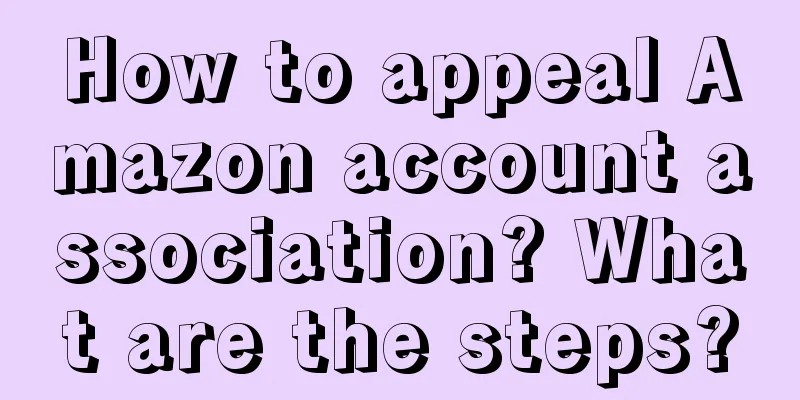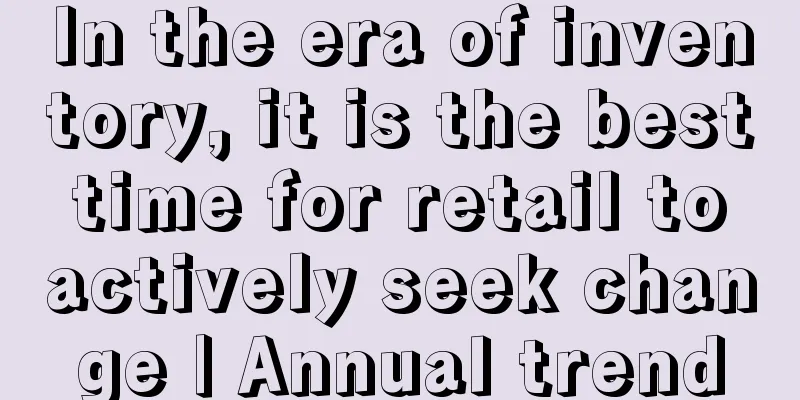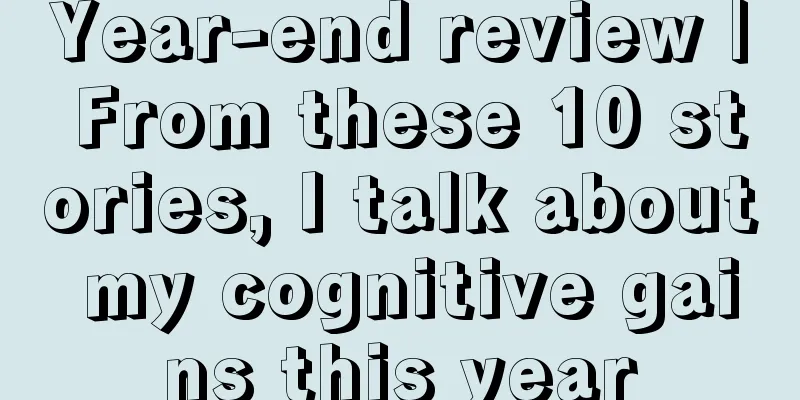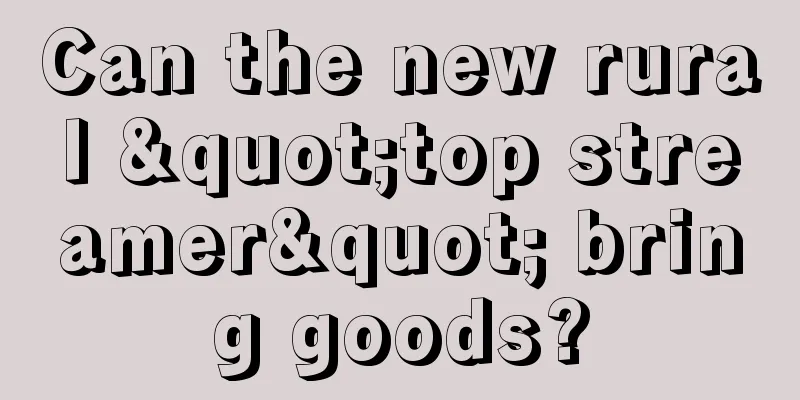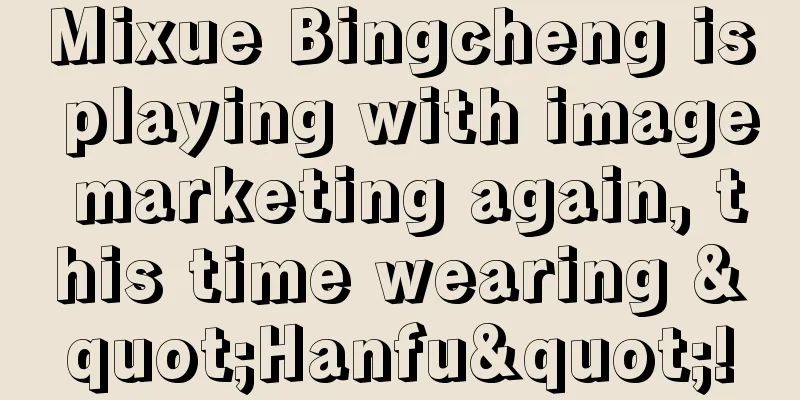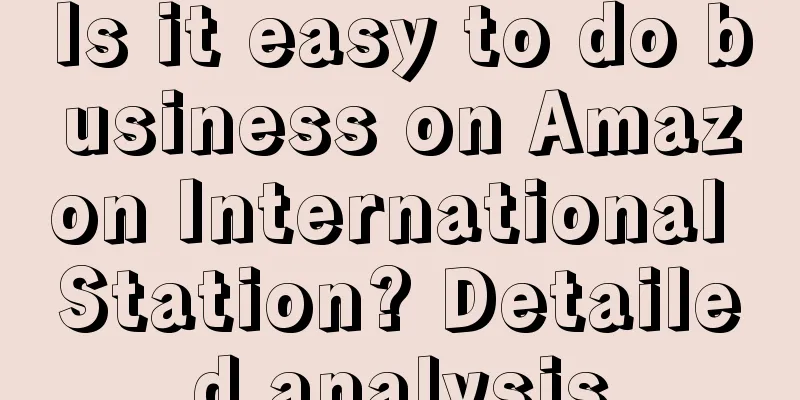What kind of AI advertising do we really need?
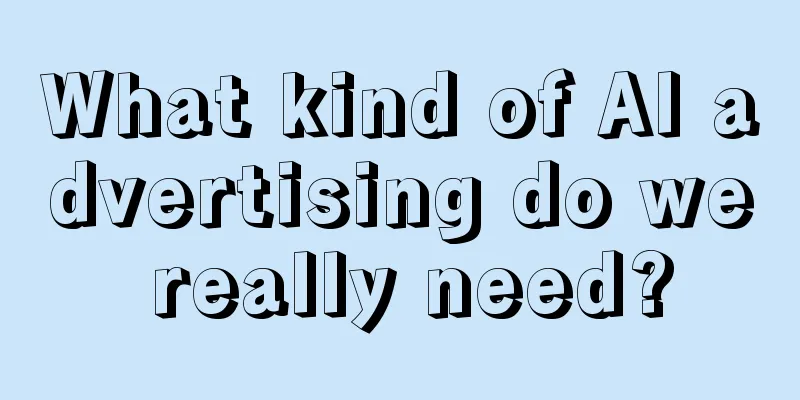
AI advertisements can be seen everywhere, such as billboards in the city center, light boxes passing by in the subway, bus stops and elevators, and software startup screens. Shopping festivals, daily publicity, event marketing, and the continuous bombardment of AI advertisements quickly cause people to develop aesthetic fatigue. Why do AI ads look uncomfortable? If we eventually reach a future embraced by AIGC, what kind of AI ads are we looking forward to? 01 Most AI ads are stuck in the uncanny valleyWe must first define that AI advertising here actually refers to advertising in a narrow sense that uses AI to create visuals and content, including posters, photos, videos and other visual presentations. Smart push notifications, algorithm recommendations, etc. are not included. We can’t get used to AI ads, first of all because of the half-truthful, half-fake, greasy feeling of this particular kind of text-generated images; in other words, the feeling of the uncanny valley. The most terrifying image is one that is neither human nor human. Generally speaking, the closer the image is to humans, the more friendly it makes people feel. However, when the image is 80% to 90% similar but people can still sense its fakeness, it will make people feel particularly terrifying. Imagine that when you are waiting for a bus, transferring to the subway, or taking the elevator, you see a smiling "mannequin" painted on a huge light box, with the wrong number of fingers, no details in the facial features, and a layer of oil on the skin. Would you feel a little creepy? Many of JD.com’s Double Eleven posters last year were generated using AI. At first glance, the red and yellow colors look very festive, but upon closer inspection, they don’t seem to be very popular. In the advertisement of a little boy eating noodles, the noodles and his mouth are almost mixed together, and no matter how sweet his smile is, it will make people feel repelled. In the field of video generation, there is a popular AI-challenging topic called Will Smith eating noodles, because it is difficult for AI to handle close-up facial changes and finger movements, and the dynamic portrayal of noodles one by one greatly increases the difficulty of consistency. In a poster for Tmall's Spring Festival marketing, a daughter eats a New Year's Eve dinner made of pre-made dishes in the city and talks on a video call with her parents. It is a warm scene. However, the daughter is a real shot, while the image of the parents is generated by AI. The falsity of the image of the parents has attracted unwarranted associations from netizens, who have made up a terrifying story for this poster like "Turtle Soup". Although there will still be a line of small words in the lower left corner stating that it was completed with AI assistance, posters that resemble photos cannot exempt us from scrutiny of their authenticity. This is because we are very sensitive to the appearance of human faces. The performance of light and the details of facial expressions will subconsciously help us judge the authenticity of the photo, and AI that simulates real-life photography will quickly be exposed. The unified style of AI advertising will be affected by factors such as the diversity of training data, the complexity of the AI model, and the optimization goals. Simple AI models may not be complex enough to capture and learn diverse style features, resulting in the images they produce being relatively simple in style. In addition, in order to ensure that the generated portraits are of high quality and recognizable, AI may be optimized to generate images that are more "safe" or "standardized" in some way. The training data sets used by AI are relatively simple in style, which may also create this unified sense of half-truth and half-fakeness. Anime-style ads are somewhat immune to issues of similarity to real people, but the copyright accusations that this style has to deal with become more intense. Once people realize which illustrator’s work an AI advertisement was inspired by, it means a dispute over copyright infringement. 02 A question of sincerityWhat is really annoying is the brand’s perfunctory attitude towards material promotion. If you want people to buy something, the promotional materials should make consumers feel comfortable, rather than giving them a picture that looks like it was produced by AI in a hurry. Details that cannot withstand scrutiny and a lack of sincerity will only make consumers unhappy. In the advertisement of Liziyuan, a beautiful young girl in white clothes was used to promote the beverage, but her fingers were as short as a baby's. Someone posted it on Xiaohongshu and complained, "Didn't you even photoshop your fingers?" The advertisement was similar to the Pocari Sweat advertisement, which made people feel that it lacked sincerity. In the early days, one of the tips for identifying AI images was to count fingers, because the depiction of hands was a major difficulty. However, with the advancement of technology and multiple generation, this problem has been avoided. The public release of a picture of a pregnant woman with four fingers is no longer a problem of the uncanny valley, but rather the carelessness of the brand in the entire content production and review process. What’s worse, businesses engaged in personal image transformation such as hair transplantation and medical beauty also use AI advertising, but people get the impression that “using AI = they can’t even afford the cheapest amateur advertising”, and there is no way to trust their products and services. AI is driven by people, so the final AI advertisement actually depends on people. What kind of model is used, what kind of prompt is used, how many times the generation is attempted, what kind of creativity is used, and how long the creation time is, all affect the final result. In a sense, this is no different from traditional advertising. Whether it is creativity or energy investment, consumers are always feeling the sincerity of the advertisers. Fundamentally, the real reason why consumers don’t like AI ads is that the ads are perfunctory and crude. In modern life, which is bombarded by all kinds of advertisements, the appearance of a shoddy advertisement will only make people feel disrespected. Furthermore, will such a product also cut corners in terms of materials and safety? The trust of consumers is completely consumed in the first step of the promotion. As for questioning whether AI will take away people’s jobs, I think it is just a moral accusation based on sincere doubts. As sociologist Zhou Li-an said, although every major technological advancement will lead to the disappearance of some traditional jobs, the number of jobs created in the end is far greater than the number destroyed. The impact of artificial intelligence on the economy and society, especially on the employment of middle-income groups, is more structural than quantitative. Therefore, AI stealing jobs is the least noteworthy aspect of AI advertising being unpopular. 03 What kind of AI ads can we expect to see?Just as the popularity of the Metaverse and NFT trends will be synchronized in the social media promotions of major brands, the use of AI is still largely a gimmick. But even if it is just a gimmick, there is still a huge difference between good creativity and bad use. We can temporarily divide it into two forms: copywriting-driven and aesthetics-driven. Copywriting-driven AI ads have very recognizable features, especially in the early days of the release of gpt4.0. A new approach is to release AI chat records or let AI verify the omnipresence of brand visual hammers. For example, one of The North Face’s advertisements has GPT give 10,000 reasons to return to the mountains, conveying the charm of outdoor sports and deepening the brand’s people-oriented spirit of outdoor exploration. McDonald's and Burger King let AI answer questions about burgers to determine who is better. This practice of using AI to confirm brand strength is a popular trend in current marketing and can deepen the brand's market influence. A brand's "AI testimony" will deepen the brand's influence. Another example is when Heinz, a company famous for its ketchup, asked AI to generate ketchup images, and all the images turned out to be classic Heinz ketchup packaging. This can be considered another example of the use of "AI testimony." Even if some foreign netizens commented that what they generated was not what they thought, they would still admit that it was a great advertisement. Similarly, Guerlain used AI to generate 1,800 images of its classic honey bottle to show its evolution. The painting with the honey bottle as the visual center has been imagined since the brand was founded in 1853, providing consumers with a fashion brand image that transcends time and space and always combines art and culture. AI here is indeed a gimmick to promote the brand image. Driven by good creativity, the injection of new elements can give people a refreshing feeling. The other is aesthetic drive. AI becomes an auxiliary tool for excellent artists. With the support of AI, good aesthetic quality and professional knowledge can create works beyond general limitations. Casablanca announced in its 23rd spring and summer "Futuro Optimisto" that it would collaborate with artists to create posters in the style of the season with the help of AI tools. It is not new for the fashion industry to embrace AIGC, but they do show us a promising picture of AI and human co-creation. Coca-Cola's "Masterpiece" commercial is also very exciting. The artist used Stable Diffusion to present the interaction of famous paintings in art galleries, showing Coca-Cola's brand image of sharing joy, vitality and affinity. The 2.46 million views on Youtube are proof that consumers love it. Another thing worth mentioning is virtual outdoor advertising, a concept proposed by artist Ian Padgham, which uses CGI technology to combine real video and 3D elements to create visually attractive outdoor advertising. This type of advertisement is favored by brands because of its direct, easy-to-understand content and novel creativity. It combines virtual elements with real scenes to provide a unique visual experience, while strengthening the core message, effectively using event marketing to attract public attention. Ultimately, do consumers really hate AI advertising? Whether people praise or hate new technologies depends on how the tools are used. Some people think that AI generates content at a low cost and high speed, which means that the quality is unstable. This does not represent the whole picture of AIGC. The time required to train AI may not be faster than that of getting a large group of people to do a thing on the spot, and the professional level required for excellent AIGC works will not be reduced. Jobs that require practical operations and coordination of external resources, such as lighting, set design, photography, and models, have been reduced, but the importance of jobs such as screenwriters, creative planners, and AI prompt engineers has become increasingly prominent. The changes brought about by AI are the reconstruction of the importance of links in the advertising industry and the reconstruction of costs. In early March, a "groundbreaking feature-length film made entirely by AI" premiered at the Landmark Nuart Theater in Los Angeles. 50 AI artists formed a creative team to create the Terminator 2 remake - Our T2 Remake. The film team said, “This will be an important milestone in the application of AI in filmmaking… We hope to show the world that AI gives everyone the ability to create their own epic story.” This is the disruptive change brought about by AIGC, and it is also the future we are really looking forward to. The advertising industry is no exception. Author: Siweichi; Producer: Wu Duidui Source: Wu Duidui (ID: esnql520), with technology and the Internet on the left hand and cultural creation and consumption on the right hand. |
<<: Why are brands flocking to the poor man’s meal package battlefield?
>>: Why has coriander become the “traffic king” in brand marketing?
Recommend
Why build an independent website? Is it okay to sell food?
An independent website is a website that is free f...
Can you make money with a toy package that costs 3999?
The author of this article understands that childr...
Don't always look at things from your own perspective
As marketers, our most important ability is to thi...
Five pitfalls of data analysis projects, don't step on them!
Data analysis is now a skill that most companies n...
How can I open a store as an individual? Does it cost money to open a store as an individual?
In the global e-commerce boom, Wish platform has a...
A reusable method to increase the number of followers of a public account by 1,000+ without spending a penny
The public account has no official promotion, the ...
Public brand building: How to build a corporate brand and how to do To G marketing?
In the flood of brands, how to build a corporate b...
Event planning results are poor? It’s time to change your thinking!
Students who work in planning know that online act...
This is how to build a data indicator system, not just memorize AARRR
This article will explore in depth how to build a ...
How does TikTok quickly locate traffic for product diagnosis?
As a TikTok merchant, do you want to know the stor...
eBay UK launches performance protection for sellers
eBay UK announced that due to the severe weather c...
Is shopping on Amazon China reliable? Are all products genuine?
As people's economic ability improves, many pe...
Where is Amazon's online customer service? Does Amazon have no after-sales service?
E-commerce is developing rapidly now, and many for...
Behind Zheng Qinwen's victory, Nike and Adidas' top business war
Behind the glory of sports competition, there are ...
Stocking up on hotels during Double 11 Shopping Festival has become the new social currency for the middle class
The consumption habits of middle-class families ar...
